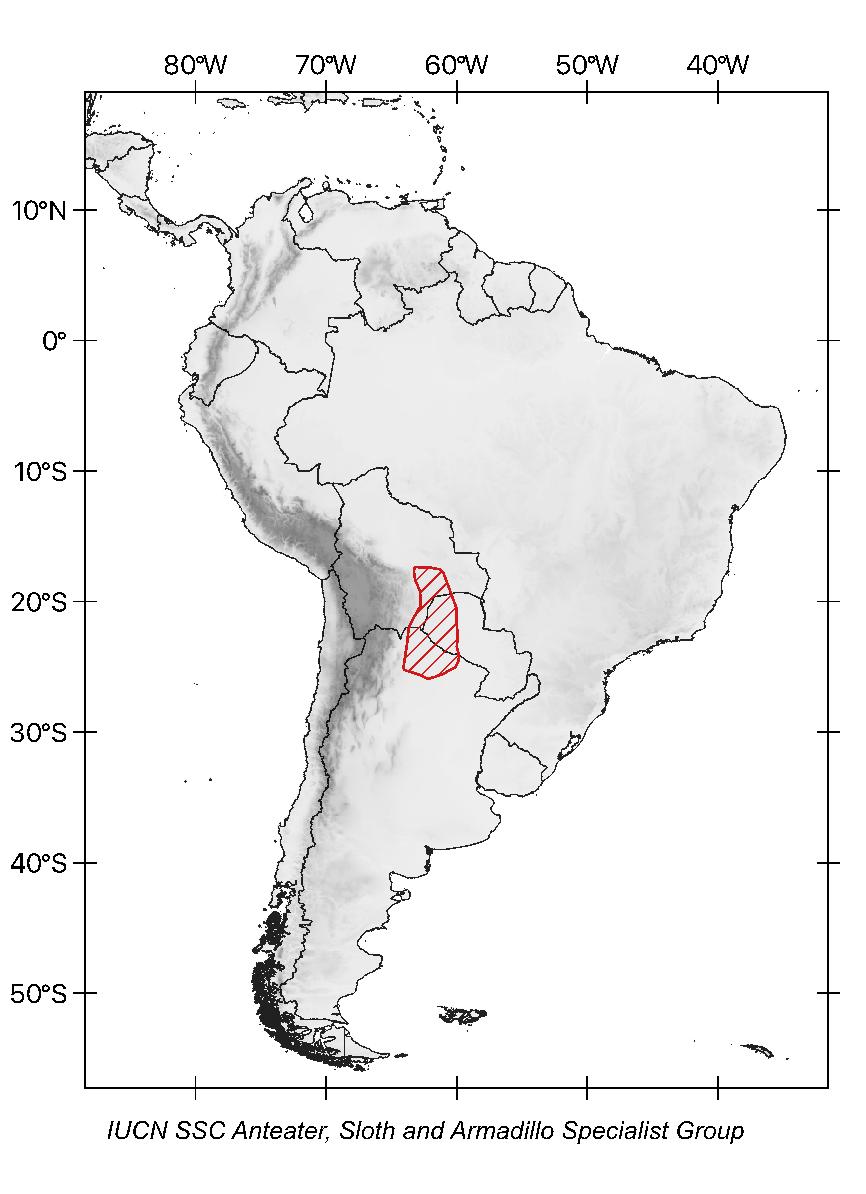Greater fairy armadillo
(Calyptophractus retusus)
other common names
Chacoan fairy armadillo
Taxonomy
Order: Cingulata
Family: Chlamyphoridae
Subfamily: Chlamyphorinae


description
This small armadillo has a head-body length of 12–17 cm and a tail that is 3–4 cm long. It weighs 90–130 grams. It is mole-like, with a fusiform shape, enlarged digging claws and a vertical, rounded plate that caps the rump. In contrast to Chlamyphorus truncatus, in this species the pinkish carapace is completely attached to the skin of the back and the head. Other differences to C. truncatus are the rounded tip of the tail and the visible ears.

range
The greater fairy armadillo occurs in the Gran Chaco region of central and south-eastern Bolivia, western Paraguay, and northern Argentina.

HaBITAT and ECOLOGy
This species is endemic to the Chaco region, where it is confined to areas with soft and sandy soil. As a consequence, the population is patchily distributed.
Calyptophractus retusus is subterranean, possibly nocturnal, and solitary.

diet
This species seems to be insectivorous, eating subterranean invertebrates and their larvae.

reproduction
Nothing is known about the reproduction of greater fairy armadillos. They presumably give birth to a single young.

curious facts
This small armadillo is highly fossorial and is therefore rarely seen aboveground.

threats
Calyptophractus retusus is under threat from habitat loss in the Chaco region. Severe wildfires, many of them intentional, have affected the Chaco of Bolivia and Paraguay over the past years, but their impact on the species is not known. An increase in road-building accompanied by a growth in the human population of this region will further fragment habitat. The species is presumably vulnerable to predation by dogs. It is persecuted because of traditional beliefs concerning the animal as an omen of disaster.

Population trend
Unknown.

conservation status
Calyptophractus retusus is classified as Data Deficient because virtually nothing is known about this species. It is known to be patchily distributed in appropriate microhabitats that are subject to ongoing habitat loss.